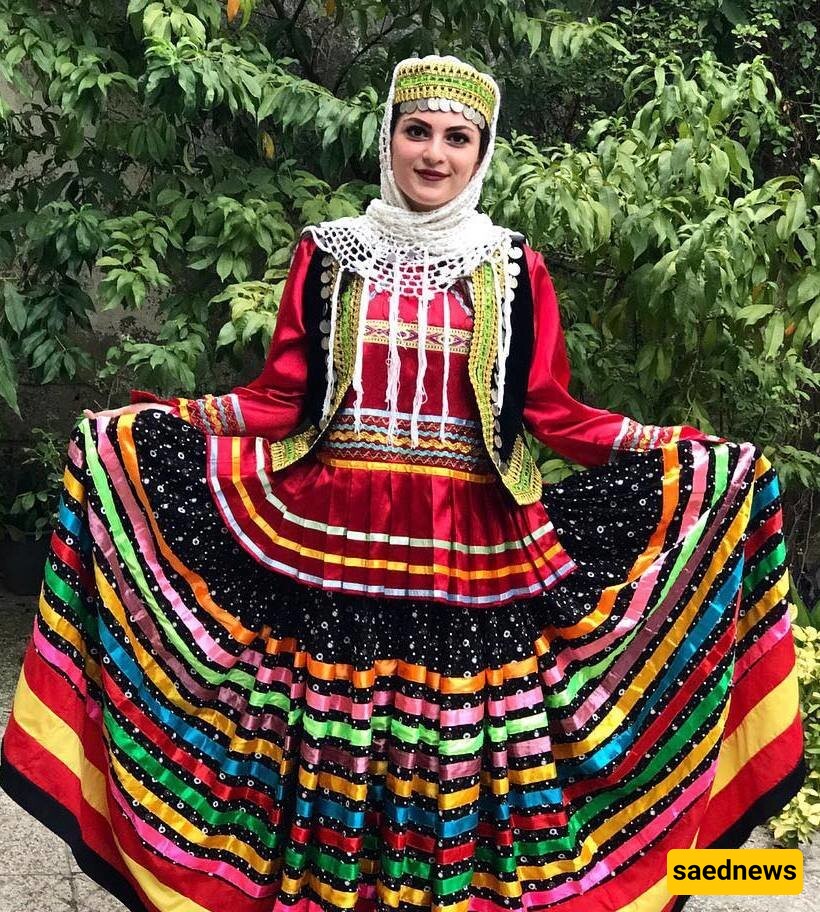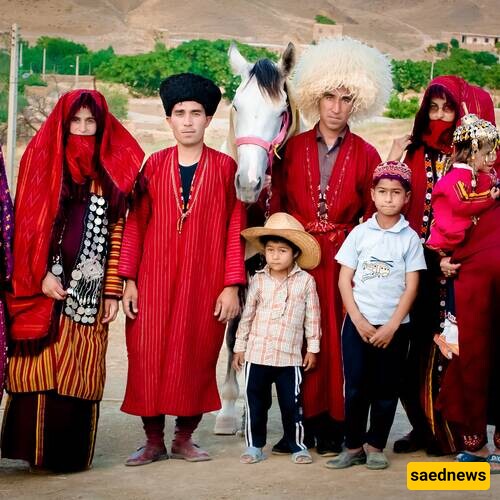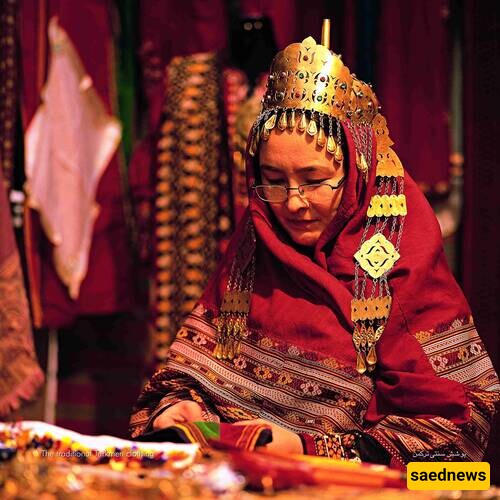SAEDNEWS: In Gilan province, northern Iran, women traditionally cover their head and hairs with ‘lachak’, which is a kind of scarf.

SAEDNEWS: Golestan is located in the northeast of Iran that is restricted to Semnan province from the south, to North Khorasan province from the east, to Turkmenistan country from the north and to Mazandaran province from the west.
Its neighborhood with some regions of different cultural roots has led to a chiefly heterogeneous ethnic composition in this province most of whom are Fars, Turk (Azerbaijan and Qizilbash) Turkman nomads, Baluch, Sistani and Mazani; each has its own special clothing along with unique rituals and beliefs.
We want to introduce the main clothing of Turkman people here. The material used for sewing Tukman cloths are silk and cotton among which the silk is more popular. The main point in this clothing is the use of different kinds of local handicrafts in making it. Turkman women wear a long dress named Kevink that is produced in different colors and a cloak named Chaod over it that is in fact a long coat highly decorated in coin embroidery.
The dominant color of Chaod is dark green, blue carbon and red. A big scarf is used by Turkman women that is named Charghad (kerchief). It also is popular among Iranian women of other regions. Here the type of feminine headdress is indicator of her marital statue. The married women wear a round hat named Alang under their kerchief.

Pants with embroidered legs named Balaq is worn by them. Gol Mikhli, Qirma, shoes with a reverse tip and long-heeled, are the main footwear of Turkman women that are locally produced. Most of Turkman girls use a round hat named Boork or Araqchin instead of the scarf that is highly decorated and some wears it under their scarfs.
It also should be said that Turkman jewelries is highly popular among most of Iranian women and it is considered here as the main part of Turkman clothing. Men wear a dress that reaches to the knee and named Don. This dress is without button and a shawl is used over it as the belt. The dress of Turkman men is usually red that is the most prevalent color among men and women. The margins of men’s clothing are also embroidered.

Chakman is a cloak made of camel’s wool and Ichmak or Poostin is a woolen clothing for cold seasons. Turkman men use also Kevink and their pants are Balaq. A woolen hat is indicator of Turkman men and Takhia is their widely used beret. Chariq, Doolaq and Chapak are the main boots of men made of leather.

